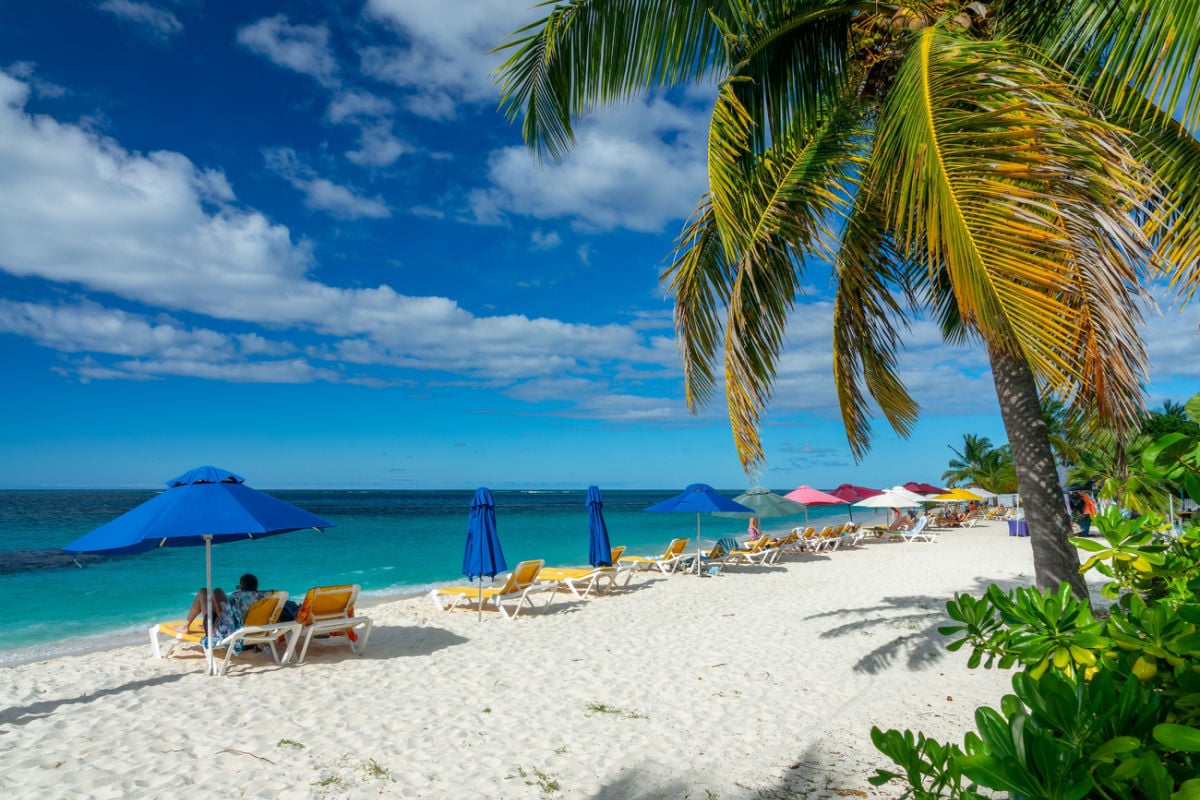From its lush jungles, across the snow-capped Andean highlands, and finally down to its extensive Pacific and Atlantic coastlines, South America’s a big place, and it’s got no shortage of incredible cities and natural wonders to discover.
If you’re planning a trip to the nether half of the continent, chances are you’re wondering where to even start:
Maybe Caracas and its gorgeous urban beaches? Medellin and its colorful comunidades? Or if you love architecture, surely Buenos Aires is the right port of call? What if we told you there’s a South American city that checks all of these boxes—and then some?


South America’s Leading City Is…
Every year, as the World Travel Awards is held, we hold our own breath waiting for them to announce the top destination for every continent. They’re the Oscars of Tourism, after all, and since launching in 1993, they have rarely ever gotten their reading of travel trends wrong.
This year, a single South American city won in three main category awards, being crowned the continent’s Leading City Break, as well as its Leading Beach Destination, and Leading Festival & Event Destination.
Surely, there’s nowhere else that could have bagged these than Rio de Janeiro, that one shiny tropical pearl in Brazil’s gem-encrusted crown:
Earlier this year, we’d already reported on how Rio was the main driver behind Brazil’s record-breaking tourism comeback, attracting the vast majority of the country’s expected 5 million yearly visitors, so we can’t exactly say we’re surprised.


What Makes A City ‘Marvellous’?
What makes Rio great, you ask? In the current political climate, some may not exactly agree that diversity is a strength, and that’s fair enough, but when it comes to this sprawling metropolis in the heart of the Atlantic forest, truer words have never been spoken.
There are several layers to Rio, from its affluent Copacabana, known for its towering condominiums and palm tree-lined beach, to a Bohemian, hilly Santa Teresa district, with its iconic yellow tramway and colonial mansions, to the vibrant Lapa, packed with samba circles and art murals.
Rio is like an infinite palette of colors, and you’d reach old age before you saw all it has in offer, and that’s precisely what makes it so inherently fascinating:


Whether you’re craving a taste of the local way of life—downing drinks in a curbside ‘boteco‘, everyday altars of beer and laughter—or going on a journey back in time at the opulent, Portuguese-era Royal Cabinet of Reading, Rio and its many contrasting facets will draw you in.
Beautiful Beaches Everywhere You Look
The ‘Marvellous City’ was named Leading Beach Destination in South America, after all, don’t worry, it has a myriad of picture-perfect beaches to back it up.
Rio is a coastal conurbation wedged between jungle and sea, and if you’re flying there in hopes of catching a tan, enjoying a caipirinha on golden sands, and escaping your fast-paced life back home, however temporarily, you’ve come to the right place.
The most famous of all, Copacabana boasts an elongated stretch of white sand bounded by azure seas, and it’s nothing short of the quintessential Brazilian beach experience:


People blasting music on their loudspeakers, beach vendors selling seafood fritters and refreshers, and beach soccer balls flying.
On the more upscale side, Ipanema is where Rio’s upper-middle-class typically congregate, and the overall elegant feel, string of luxury beachfront hotels, and boutique shops reflect that.
Away from the crowded South Zone, the undeveloped Prainha is the go-to spot for the Rio youth, particularly watersports enthusiasts: expect big waves, unspoiled patches of Atlantic forest, and no skyscrapers in sight for miles.
The Hidden Gems Of Rio
Lively neighborhoods and beautiful swimming areas aside, Rio effortlessly combines cultural attractions and natural wonders like no other city.


In the morning, you might ride the cable car over the favelas and lush hillsides to the Sugarloaf Mountain viewpoint, then spend the afternoon visiting the historic São Bento Monastery, one of the oldest in South America.
Rio is a global capital primarily known for its liberal atmosphere and paradisaical beaches, sure, but let’s not forget it’s also an unsung cultural hotspot. It was founded as early as 1565, and for history buffs out there, there are plenty of colonial treasures to unearth.
Our personal favorite is Paço Imperial, a royal palace originally built to house the Portuguese royal family, at a time when they relocated to Rio: it features a grandiose exterior, richly decorated chambers and libraries, and a landmark inner courtyard.


2 Important Things You Should Know About Rio Before Visiting As An American
Take Your Personal Safety Seriously
As an American, there are a couple of things you should know before planning a trip to South America’s postcard city.
First, there’s the issue of safety. As much as some travel publications and bloggers love to downplay the security problem in Rio, you should know it is very real, and it can affect tourists, particularly those who aren’t careful enough and don’t follow local guidance.
There’s no doubt Rio is gorgeous, but we must also acknowledge that the crime rate, even when compared to other Brazilian cities, is elevated. Petty crime is rampant, particularly in areas frequented by tourists, as is violence.


The U.S. State Department ranks Rio as a Level 2 destination, meaning Americans aren’t exactly discouraged from visiting, but are advised to take some extra precautions—and that’s advice worth taking very seriously.
- Avoid walking alone in poorly-lit areas at night, or even deserted streets during the day
- Do not flash valuables like expensive new iPhones, jewelry, watches, and money in public
- Be vigilant of your surroundings and your own belongings when visiting a public beach
- Do not visit favelas by yourself, especially without an accredited tour guide, or without being accompanied by a local you trust
- Do not follow Google Maps blindly: it’s programmed to give you the shortest possible route, and sometimes that could involve walking through sketchy zones
- Never attempt to resist an armed robbery


You Need An e-Visa To Enter Brazil
Finally, you should know the visa rules for Americans traveling to Brazil as tourists have changed as of April 2025. Simply bringing your valid passport to the airport is no longer sufficient for boarding..
You need a Brazilian e-Visa, and it’s not something you can get in only a few seconds as you wait for your boarding gate to show. It can take approximately 5 business days, and there are a bunch of documents required, so you’re advised to apply for it some time in advance.
You’ll need:
- A valid U.S. passport
- Recent bank statements showing a mininum balance of at least $2,000
- Letter of intent detailing your travel plans
- Proof of return travel
The application fee is $80.90, and the visa itself is valid for up to 10 years. During the time it is valid for, you can enter Brazil up to 90 days per year.
Apply directly via the official Brazil e-Visa Portal here.
The Travel Off Path Advantage: Your Travel Toolkit
Subscribe To Our Latest Posts
Enter your email address to subscribe to Travel Off Path’s latest breaking travel news, straight to your inbox.

